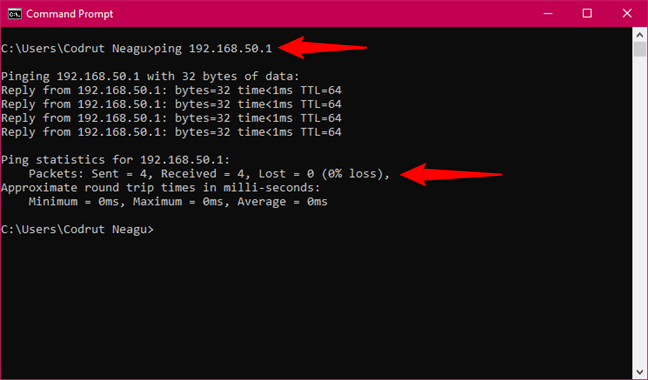

Any machine with the requested IP address will reply with an ARP packet that says "I am 192.168.1.1", and this includes the MAC address which may receive packets for that IP.Edit: Unless you have some other form of access to the machine. You need to look at the routers ARP table. Because it is a broadcast packet, it is sent to a special MAC address that causes all machines on the network to receive it. MAC addresses do not get passed on by routers. If the IP address isn’t found in the ARP table, the system will then send a broadcast packet to the network using the ARP protocol to ask "who has 192.168.1.1".If there is a value cached, ARP is not used. When trying to send a packet to an IP address, the system can first consult this table to see if it already knows the MAC address. Systems keep an ARP look-up table wherever they store information about what IP addresses are associated with what MAC addresses.First, we will ping the remote system IP address with the ping command. But there is an alternative way to execute MAC ping operations. This involves using ARP to resolve the address, hence its name. Ping MAC Address with ping Command By default, the Windows, Linux, and MacOSX operating systems do not provide a specific command to ping the MAC address. When you try to ping an IP address on your local network, say 192.168.1.1, your system should turn the IP address 192.168.1.1 into a MAC address. ARP stands for Address Resolution Protocol. To do a ping test on Mac, open Finder and go to Applications > Utilities.

(ETA: What if you can't get to the Console port? How do you get the IP address of the switch in order to SSH or (if you must) Telnet in?)Ĭouldn't you just use CDP? #show cdp nei detail will show you the ip of the connected devices. The amazing thing to me is, this far into the 21st Century, this is still the only way I could find to get this information - i.e. Also, 'sh ip arp | i 0/24' will show just the MAC address(es) on that port.) verify the ping connectivity you need to use the IP address that the CDP. If you're all Cisco, 'show cdp neighbor' (or 'sh cdp nei') will get you to the next switch. utility determines the path by using the MAC address tables of the switches in. (Small tip: When you see a large number of MAC addresses showing up on a single port, there's a switch on that port into which those MAC addresses are connected. It helps to Ping the subnet's broadcast address (e.g. :^D After beating Google to death over it, hoping for some useful tool, I ended up using exactly the same process (plus the online MAC address lookup to ID the device manufacturer), so I can affirm this works perfectly, if you work it.Īs you can see, the 'sh arp' or 'sh ip arp' commands also give you the MAC addresses, so essentially the 'sh mac add' is only to get the port in which the device is connected. Thanks for posting this *after* I finished a "What's Connected Where" jihad on our network.


 0 kommentar(er)
0 kommentar(er)
